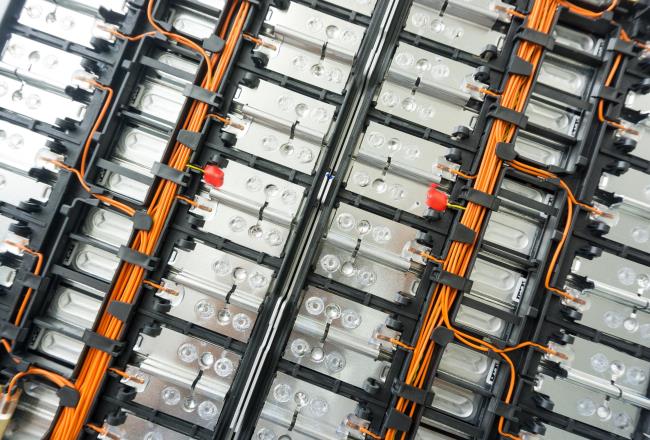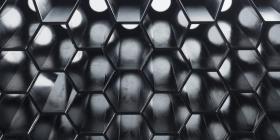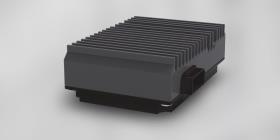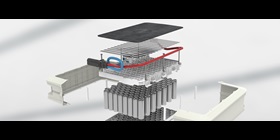
Covestro Engineering Plastics: Ensuring EV Battery Safety, Reliability, Scalability, and Lower Carbon Footprint.
Polycarbonate Innovations for EV Batteries: from flame retardancy to thermal management
In the realm of electric vehicle (EV) design, fitting a large number of lithium-ion battery cells into a confined space poses a formidable challenge. Not only must the cell holders, frames, and housing components maintain dimensional stability and mechanical robustness during EV battery service, but also withstanding temperature fluctuations. Furthermore, excellent electrical properties, reliable mechanical properties and meeting flame-retardant standards, particularly UL94 V-0 classification, at low wall thicknesses, is imperative in adhering to dynamic OEM requirements.
To address these stringent criteria, our team has engineered dedicated polycarbonate and polycarbonate blends that excel in meeting these multifaceted demands. Our materials portfolio includes flame-retardant Bayblend®, ideally suited for cell holders, cell contact systems, and battery modules.
Meanwhile, Makroblend® boasts high ductility, making it ideal for protective housing and crash absorbers, and Makrolon® TC, a thermally conductive polycarbonate, ensures optimal temperature distribution, safeguarding against hot spots and enhancing battery lifetime.
EV Battery Platforms: from modular to cell-to-pack architectures
The design of lithium-ion battery packs typically encompasses cylindrical, prismatic, or pouch cell geometries, which are housed within modules interconnected to attain desired voltage levels. As EV battery packs and platforms become more innovative, designers are embracing module-less architectures like cell-to-pack or even cell-to-chassis designs.
For cylindrical cells, precise cell positioning mandates stringent housing material tolerances, especially for intricate geometries inherent in such cells. Our Bayblend® portfolio offers the necessary high ductility and flame retardancy required, making it an optimal choice for designing parts with complex geometries and thin walls.
In assembly, the utilization of UV-curable adhesives, facilitated by Bayblend® FR3040 EV, expedites the bonding process, significantly reducing assembly times. Similarly, for prismatic cell types, Bayblend® FR3080 EV stands out as an advanced polycarbonate blend, combining UL 94 V-0 listing and excellent mechanical and electrical properties.
Addressing long-term durability, designs requiring extensive vibration testing benefit from Bayblend® FR3010's flame retardant properties. Lastly, pouch cell types demand housing considerations that accommodate swelling forces during charging and discharging cycles. Our mineral-filled products in the Bayblend® portfolio offer excellent ductility and flame retardance, making them well-suited for such applications.
Bayblend® and Makrolon® are pivotal in producing safe and efficient components for battery-powered electric vehicles. Our dedicated support team stands ready to assist you in finding solutions tailored to your requirements for power, capacity, and cost-effectiveness throughout the manufacturing process.
Premium Performance: high voltage applications and thermal management
Bayblend® FR3015 CTI and Makrolon® FR6019 CTI cater to high-voltage applications, providing flame retardancy and ductility. Bayblend® FR3015 CTI, with its high Vicat temperature and UL94V-0 rating, ensures component safety and stability without glass-fiber reinforcement.
Enhancing thermal management of EV battery applications and electronics can be seamlessly achievable with our cutting-edge thermally conductive polycarbonates Makrolon® TC. These advanced materials can be used to safeguard battery cells, electronic housings, control units, and even metal replacement. Makrolon® TC not only optimizes heat dissipation but also ensures effective electrical insulation, guaranteeing safety and thermal efficiency. For applications requiring even greater heat dissipation capabilities, our electrically conductive Makrolon® TC emerges as the top choice, offering unparalleled performance and reliability.
Makroblend® Crash Absorbers: Advancing EV Safety Standards
Post-assembly, safeguarding EV batteries from mechanical loads is paramount. Our developed crash absorber, crafted from Makroblend® polycarbonate blend, efficiently absorbs kinetic energy within the vehicle's side sills, optimizing space and offering a sustainable alternative to traditional materials. The Makroblend®-based absorber paves the way for further innovations, inspiring OEMs worldwide to explore thermoplastic alternatives for heightened crash protection and reduced CO2 footprint.
We embrace Circular Economy
We emphasize circularity through its CQ portfolio, featuring the RE series with renewable attributed products and ISCC PLUS certification. These solutions offer drop-in implementation without technical risks, reducing carbon footprint via a mass-balance approach and renewable electricity. Makrolon® RE grades are climate neutral, while Bayblend® FR RE series cuts carbon footprint by one-third. Additionally, the R series in the CQ portfolio incorporates up to 75% post-consumer recycled materials, like water bottles, in polycarbonate grades, promoting sustainability and aligning to the End of Life Vehicle (ELV) needs.
Key Benefits
- More Possibilities A smart polycarbonate portfolio tailored to market and battery requirements
- More Reliability Our Bayblend® and Makrolon® showcase stable dimensional, mechanical and electrical properties in during battery operational temperatures
- More sustainable Circular solutions with renewable attributes and recycled materials, reducing carbon footprint and promoting sustainability.
- Extended Lifetime Effective temperature management improved with thermally conductive polycarbonates
- More Scalability Low warpage and dimensional stability ensure fast and reliable parts assembly under battery conditions

















